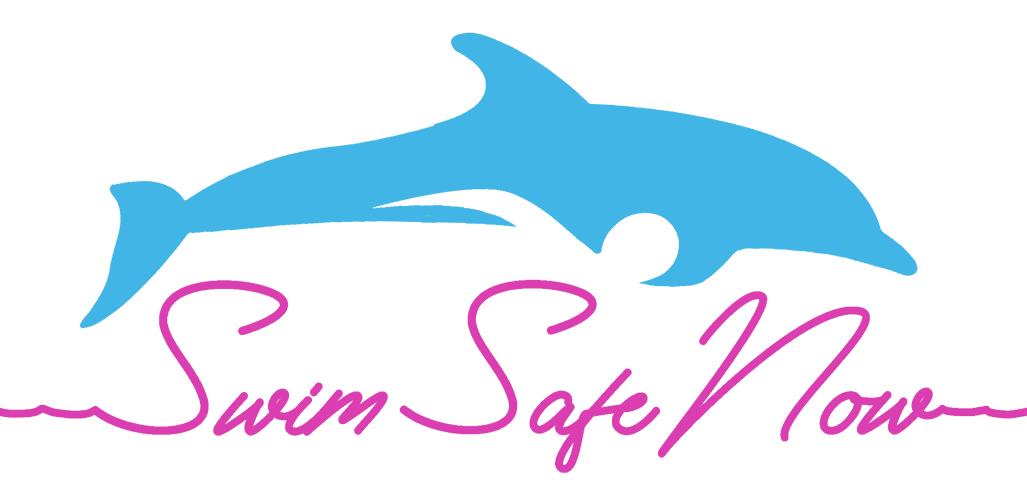What skills will your child learn in Swim Safe Now Lessons?
When researching swim programs for your child, be sure to ask lots of questions, including lesson goals. Believe it or not, independent skills are NOT always taught in other “learn to swim classes”. Be sure that the skills listed below will be taught in a matter of weeks, not years!
Download our Swim Instructor Checklist for a list of questions to ask when interviewing a potential Swim Instructor.
So what SHOULD be included in high quality swim lessons?
independent rOLLBACK to FLOAT
Your infant will be taught how to roll onto their back independently to rest and breath until rescued. This is a key aquatic survival skill for all ages!
INDEPENDENT SWIM
(children age 1+)
In addition to an independent rollback to float, your child over the age of one and walking, will also learn how to swim in a swim-float-swim sequence to reach an exit. These are key aquatic survival skills for all ages!
Hold Breath as Water Rises
Your child will learn how to close their mouth and hold their breath as the water rises on their body. Do not teach your child how to blow bubbles underwater. This encourages them to open their mouths underwater and exhale all the air that helps with buoyancy.
Practice Falling In wearing clothes
86% of children who drown are fully clothed at the time.
Once your child has mastered their skills in a swim suit, they will practice fully clothed. They will also practice simulated fall-in scenarios under careful supervision of their instructor. This provides the opportunity to problem-solve in a controlled environment.
1:1 Student Instructor Ratio
Swim Safe Now® Lessons are taught one student per one instructor. This provides a safe learning environment and allows your instructor to tailor lessons to fit the unique physical and emotional needs of your child.
PRACTICE WITH PARENTS
As skills are mastered, parents participate in lessons and learn how to practice at home to reinforce what their child is learning in lessons.
Parents and students learn how to integrate skill practice with recreational pool play, such as jumping in from the side of the pool and swimming back to the wall or steps, diving for pool toys, etc.
What about Instructor Training & Safety?
Academic and Hands on Training
Your Swim Safe Now® Instructor has spent over 100 hours of in-water, hands-on training with infants and children of different ages. Training also includes academic work out of the water, in the areas of behavioral science, child psychology, operant conditioning, anatomy & physiology and more.
Ongoing continuing education
requirements and annual re-certification are required.
CPR & First Aid Certified
Your Swim Safe Now® Instructor has been trained to respond in the event of an emergency. Our Instructors are required to maintain current CPR/1st Aid/AED Certification for infants, children and adults.
BACKGROUND CHECK & FINGERPRITING
All Swim Safe Now®
Instructors are required to pass a criminal background check and are fingerprinted in their respective state.
Do NOT use Flotation Devices
A coastguard-approved life jacket is necessary and required by law while boating and is a great safety measure around open water.
High-Quality lessons do not use flotation devices to teach your child to swim. Flotation devices can confuse your child, and lead to postures that cannot be maintained without its use such as: vertical, head up posture and counter-productive bicycle kicks when swimming.
In order to maximize success in lessons, please discontinue using these devices (including puddle jumpers, water wings, arm bands, etc) while swimming due to the false sense of security and vertical muscle memory created by these devices.
What should NEVER be part of a Swim Lesson?
In addition to a thorough registration process and medical screening prior to approval to begin lessons, your Swim Safe Now® Instructor will ask a series of questions and assess your child’s health prior to each and every lesson. Your Instructor will continue to monitor your child throughout each lesson and adjust the lesson as needed to meet the physical and emotional needs of your child. Our Instructors are well trained in health and safety in addition to safely teaching survival skill techniques.
Unfortunately, not all programs share the same safety protocols or safety record as Swim Safe Now®. The following should NEVER be associated with lessons.
EXCESSIVE WATER DRINKING
Excessive water drinking, excessive urination or diarrhea after a lesson which can lead to hyponatremia (water intoxication).
VOMITTING/CHOKING
Vomiting during a lesson (or after), swollen belly or belly pain (abdominal distention), reduction in activity level (lethargy) during or after a lesson.
Choking/gagging on water: children should never struggle for air during lessons. Respiratory distress (retracted breathing) and aspiration can occur in unsafe programs.
FORCEFULLY BEING THROWN INTO THE WATER
When practicing simulated falls into the water, students should never enter the water at a force greater than natural gravity. The Instructor should always be IN THE WATER with the student, providing guidance and encouragement. Children should never be forcefully thrown into the water or allowed to struggle for air, which could cause injury and emotional trauma.
What does the AAP have to say?
INVESTIGATE
“There is tremendous variability among swim lessons, and not every program will be right for each child. Parents and caregivers should investigate options for swim lessons in their community prior to enrollment to make sure that the program meets their needs and the needs of the child.”
PRACTICE SELF-RESCUE
“High-quality swim lessons provide more experiential training, including swimming in clothes, in life jackets, falling in, and practicing self-rescue.”
Ready to connect with one of our Certified Instructors? Complete our Contact Form to receive additional information and to schedule your child for lessons
Learn more about High Quality Swim Lessons, Layers of Protection and Drowning Prevention at parentspreventingchildhooddrowning.com
